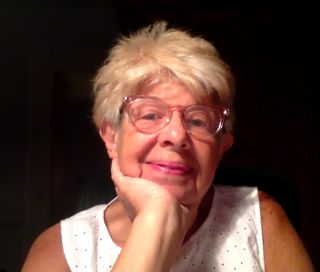Inside the Head Of a Hoarder
By Hara Estroff Marano published May 4, 2021 - last reviewed on February 18, 2022

My stepsister is a hoarder living with my father and stepmother, both 88 years old. The hoarding is confined to my stepsister’s room plus the outdoor covered patio where she has stacks of ruined empty boxes she won’t allow to be thrown away. The stuff has attracted mice and roaches, but exterminators I’ve contacted won’t touch it because the accumulated excess will continue to attract vermin. My stepsister cares for her mother, who has dementia and is wheelchair-bound, and my father, who is of sound mind but uses a walker. I am grateful for all she does, but the situation is unsanitary. She resists whenever her family confronts her about the hoarding. Any suggestions?
Yes, a diametrically different approach might make inroads where confrontation cannot. One of the hard facts about hoarding is that people who do it don’t see it as a problem. And they don’t magically see the light by being confronted, which is far more likely to stiffen resistance. Better to engage in conversation suffused with compassion and curiosity. But first, you have some ground to make up, given the history of confrontation.
Start with some understanding. There’s much more to hoarding than meets the eye. To influence your stepsister (or anyone else), you need some idea of the world from her perspective. In fact, those who hoard see the world very differently than you and I do, and the possessions they refuse to discard carry much more than any outlived utility—namely identity, a sense of responsibility, a sense of safety, and an unusual vision of possibility.
“Hoarding is in part genetic, in part an executive function and information-processing problem, and in part a reflection of the nature of attachments people form to their possessions,” says Randy Frost, an emeritus professor of psychology at Smith College, the author of Buried in Treasure, and a leading expert on hoarding. “We all have possessions that have magical properties beyond their physical characteristics. But for those who hoard, the attachment is more rigid.” Objects contain a cache of memories that would be lost if discarded. The memories stored in possessions are visceral, Frost explains. “If I throw an object away, it’s erased from my memory, as if it never happened. Hoarding helps preserve identity.”
Decades of research have led him to see a moral component to hoarding as well. People who hoard have a sense of responsibility for the care of possessions, what he calls “material scrupulosity.” Therefore, “throwing items away would make the person feel like an ethical failure,” he says.
What may be more surprising is the aesthetic pleasure hoarders derive from objects. They notice unusual details, see artistic possibilities even in old wrappings. They never get around to doing anything with those possibilities, however, says Frost, probably because of their executive function difficulties.
What’s going on in their brains are problems with sustaining attention, particularly on complex tasks, and with categorizing things. They organize their world concretely—visually and spatially, as if they have a map of every pile—a system that breaks down in the face of a large mass. The perception and organization difficulties lead to what Frost calls “clutter blindness.” They just don’t see it.
And that suggests a strategy that may be helpful with your sister to jumpstart change—of course, well after you’ve had many everyday conversations to regain her trust. You can ask her to take pictures of the house, including her room and the patio. Likely, the pictures will not look like the home she visualizes in her head. But seeing them, says Frost, can take the edge off making decisions about objects.
Consider starting right now, because the situation is not likely to improve on its own. Engage your stepsister in pleasant conversations about anything but the hoarding. At some point the topic is likely to arise organically. You can then expose your sister to the expertise that currently exists—Frost’s workbook, Buried in Treasure, and peer-led Buried in Treasure workshops that have sprung up in many communities. There’s no guarantee, but it’s a far wiser approach than confrontation.
